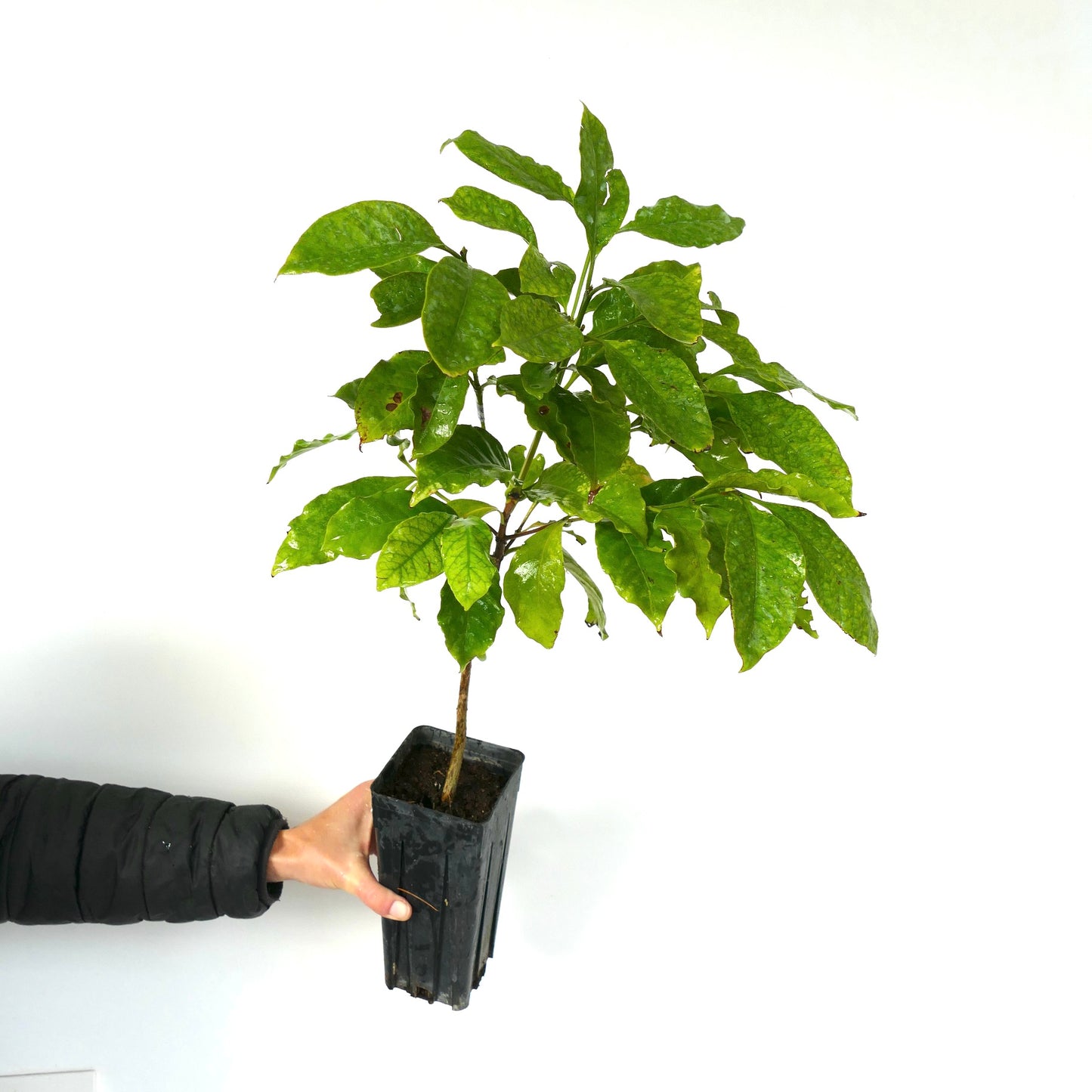- Catalogue Plants
Coffea robusta (sin. canephora)
Coffea robusta (sin. canephora)
Couldn't load pickup availability
Plant Description
Coffea canephora, commonly known as Robusta coffee, is another important species of coffee plant, alongside Arabica coffee. It is native to the central and western regions of sub-Saharan Africa. Robusta coffee is known for its robust and bitter flavor profile and is often used in espresso blends and instant coffee. Here's a brief description along with cultivation tips:
Cultivation:
-
Climate: Robusta coffee plants thrive in a wider range of temperatures compared to Arabica, with a preferred range of 75°F to 85°F (24°C to 29°C). They can tolerate higher temperatures but are more sensitive to frost.
-
Light: Similar to Arabica, Robusta coffee plants prefer filtered sunlight or partial shade. Protect them from intense, direct sunlight, especially during the hottest part of the day.
-
Soil: These coffee plants tolerate a wider range of soil conditions than Arabica. They can grow in a variety of soils, including sandy and loamy soils. However, well-draining soil with good fertility is still important for optimal growth.
-
Watering: Keep the soil consistently moist but not waterlogged. Robusta coffee plants are relatively more drought-tolerant than Arabica but still require regular watering. Ensure that the top inch of soil does not dry out completely between watering.
-
Fertilization: Apply a balanced, slow-release fertilizer during the growing season (spring and summer). Monitor nutrient levels, as Robusta coffee is known for its high nutrient requirements.
-
Pruning: Prune your coffee plant to maintain its shape, improve air circulation, and remove dead or diseased branches. Pruning can also help control the height and density of the plant.
-
Pest and Disease Management: Robusta coffee plants can be susceptible to various pests and diseases, including coffee berry borer and leaf rust. Implement regular pest monitoring and use appropriate control measures as needed.
-
Harvesting: Coffee cherries (the fruit) typically ripen about 9-11 months after flowering, which is slightly later than Arabica coffee. Harvest the cherries when they are fully ripe, usually indicated by their red or dark brown color and slightly soft texture.
-
Processing: After harvesting, coffee beans need to be processed to remove the outer pulp and mucilage. There are different processing methods available, including dry and wet processing. The beans are then dried, hulled, and sorted.
-
Roasting: Roasting coffee beans is the final step in coffee production. Robusta coffee is often roasted to a darker level than Arabica, resulting in a stronger and more bitter flavor.
Robusta coffee is known for its high caffeine content and bold flavor, making it a popular choice for espresso and instant coffee. Cultivating Robusta coffee can be a bit more forgiving than Arabica, but it still requires attention to its specific growing requirements to produce quality beans.
IMPORTANT: Picture 1 show adult plant not for sale, Picture 2-4 show an example plant like the one you will receive.
Disclaimer: Please keep on mind that the plant may have grown since pictured. Also be aware that most plants change across seasons. If present foliage could have been fallen or change in its color.
Botanical family: Pinaceae
Botanical genus: Coffea
Botanical species: Coffea robusta
SKU:BA-0703-S-1
Cultivation
Cultivation
Additional information
Additional information
Plant Height:
Plant Diameter:
Picture Taken on:
Pot Size:
Grafted/Not Grafted:








